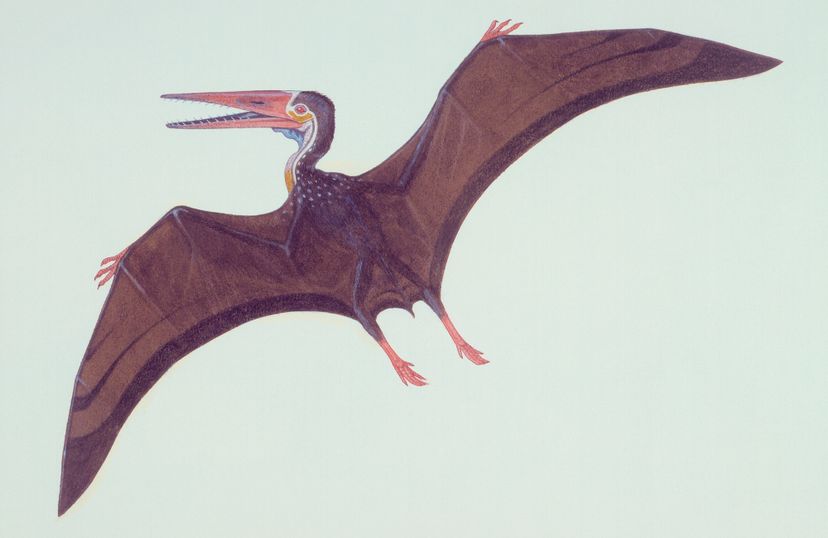
About This Quiz
In traditional scientific writing, as well as science fiction, pterodactyls were portrayed as ugly and evil, bat-like creatures. Yet new scientific evidence has unearthed some startling facts about pterodactyls. Turns out they may not have been as ugly or as evil as we once thought. Take this quiz to consider the pterodactyl in a new light.Pterodactyl fossils were first found in the 1700s in a limestone quarry in Bavaria, Germany. More recently, scientists have discovered well preserved pterodactyl fossils in almost a dozen locations across the United States.
Pterodactyls lived during the Mesozoic era, some 240 million years ago.
The Mesozoic era is made up of three periods: the Triassic, Jurassic and Cretaceous periods.
Advertisement
The pterodactyl belonged to the pterosaurs group of flying animals. There were two branches of this group: the rhamphorhynchoids and the pterodactyls.
Although the rhamphorhynchoids originated first, they were soon dwarfed in size by the pterosaurs, which were much larger.
The largest-ever pterodactyl, called the Quetzalcoatlus after the Aztec god, had a wingspan of over 40 feet (12 meters).
Advertisement
About 100 different pterosaurs species have been discovered, but scientists believe there are many more. They have mainly been discovered buried in coastal rock.
In 1809, French anatomist Georges Cuvier gave the pterodactyl its name, which means wing finger. He assumed that the pterodactyl's closest living relatives were reptiles.
In the 1970s, Russian scientists found indisputable evidence that the pterodactyl did not have bat or crocodile like skin, but rather was covered in fur.
Advertisement
An animal's color must act as a camouflage and help it attract a mate. If the pterodactyl lived near the ocean, it was most probably the same color as seabirds today -- white, difficult to see against the glare of the sun or a cloudy sky.
Fossilized skulls show that the pterodactyl had a brain similar to that of a modern day bird. Like birds, it had large frontal lobes, indicating high intelligence and enlarged optic lobes, evidence of exceptional eyesight.
Fossil evidence indicates that the pterodactyl's wings were covered with strong, flexible fibers encased in a sheet of elastic tissue. This would have made their wings strong and unbreakable.
Advertisement
The force that causes a bird or airplane to become airborne is called lift. It is created by the difference in speed of the air above and below the wing, which leads to a rush of high pressure air against the wing.
The larger the wing surface, and the faster it slices through the air, the greater the lift that is generated.
A pterodactyl's wing structure is similar to that of an airplane. They both have flaps on the curved edge of their wing that can be flexed up and down for extra lift.
Advertisement
Recently found pterodactyl track ways indicate that pterodactyls had bat-style locomotion, as opposed to bird-style, and that, like bats, they walked using their front and hind legs.
A pterodactyl would have used almost 100 percent of its body muscle when flying, making it a stronger flyer than bats and birds.
Large flying animals face the greatest challenge during takeoff. A pterodactyl's body had special features to combat this difficulty, including sharp claws to enable them to climb, giving them extra height.
Advertisement
The problem with hunting for fish from the air is that it is difficult to catch fish that are not near the surface. To counteract this problem, the pterodactyl uses the lunge-diving technique to land deep below the surface.
The pelican hunts fish in the same way as the pterodactyl. They both used the plunge-diving technique and had long, pointed bills and expandable lower jaws that could take in a lot fish in one gulp.